SLOW STAY in Portugal: Farmhouse of the Palms
under the algarve sun
SLOW stay IN PortugaL | bed & breakfast farmhouse of the palms
interview with Frank & Veronique Persyn (owners) | photography courtesy farmhouse of the palms
For thosE with enviable access to portugal this year, (or next), soak up the last rays of Algarve sunshine at farmhouse of the palms.
this 300 year old farmhouse has been thoughtfully preserved and curated to former glory with respectful connection to the local history, architecture and lifestyle, so typical to this region.
all white-washed with old world elegance and rustic charm farmhouse of the palms sits at the top of a cobble-stone hill in the middle of rural Algarve. Not too far from Algarve's famous beaches or buzzing Faro, but far enough to feel a sense of tranquility with hospitable kindness, away from it all.
Farmhouse of the Palms presents an authentic, slow stay experience not that far from Portugal’s most popular coastal tourist town, Faro. In fact, the Algarve boasts some of the world’s most beautiful beaches! But what do you think makes this part of world a cultural travel destination?
Although many come to enjoy the beautiful beaches of the Algarve, just a short trip inland will make you feel like stepping back in time: unspoiled nature parsed with sleepy villages, where the only excitement happens in the local café. Eastern Algarve has some pretty and interesting villages to visit. Like Tavira that boasts 30-something churches or Olhão with its white cubist city centre, or even Faro, with its well-preserved and what we consider ‘strongly underrated’, historic centre.
What is the beautiful farming story behind this heritage estate? What are the typical features of traditional architecture to this region?
This Algarvian farm dates back 300 years and used to produce wine. Unfortunately, little remains of this activity, but we can still imagine the slopes filled with vineyards and busy daily farm life. Typical of the region,
the farm is a composition of several buildings around a central courtyard. (In Portuguese we would call this a ‘monte'.)
Thick stone walls, stairs made of beautiful natural stones, floor and roof tiles made from locally baked terracotta… all architectural features of this region. Also typical, a rooftop terrace (açoteia), as access for the locals to watch over the land. We have converted the original rooftop terrace of our Farmhouse of the Palms into a suite for guests to sleep under the stars. Most of our suites have been converted keeping the original character of the farmhouse. Suite 3 sits adjacent to the main building, originally used as the servants house.
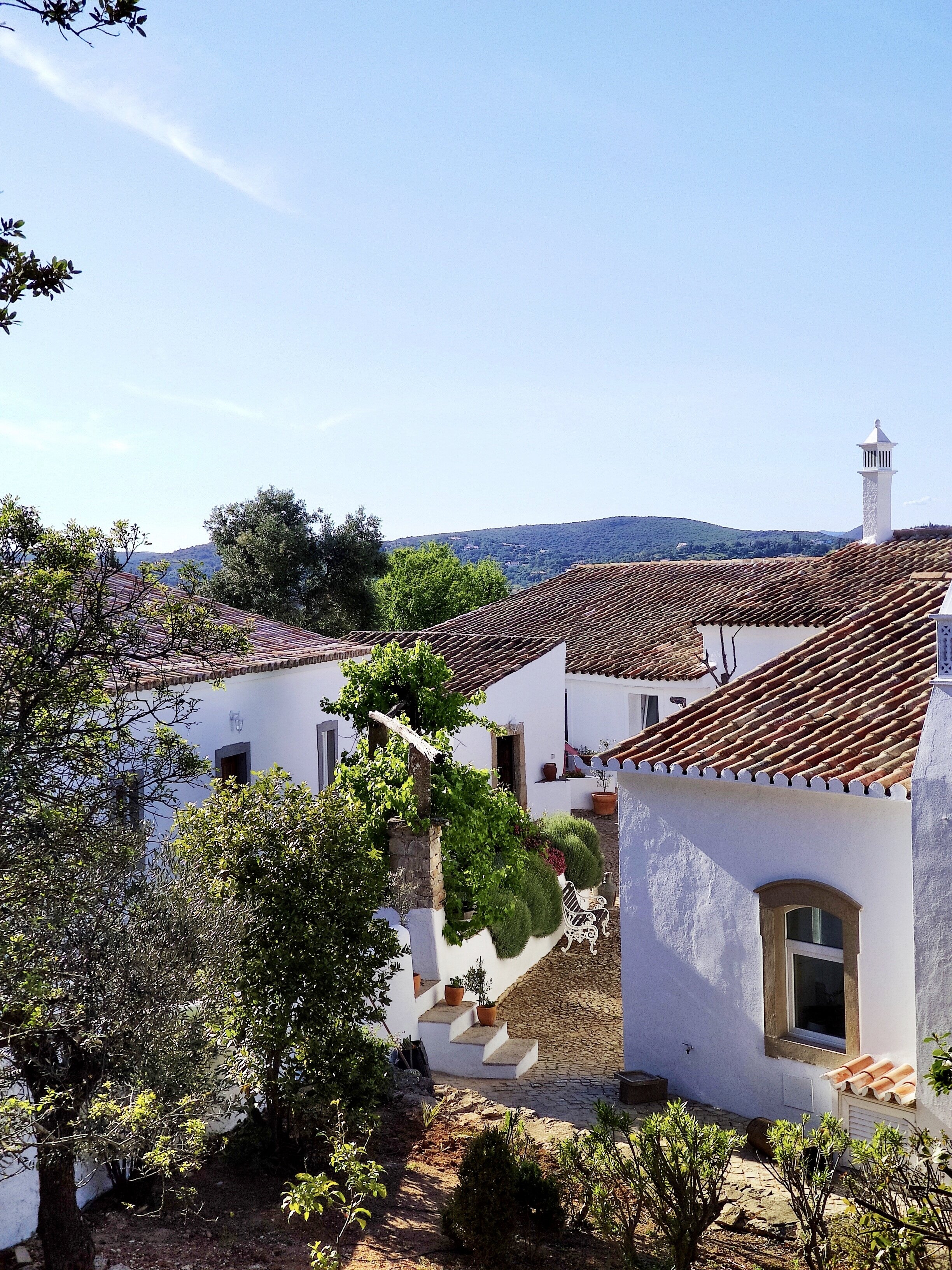
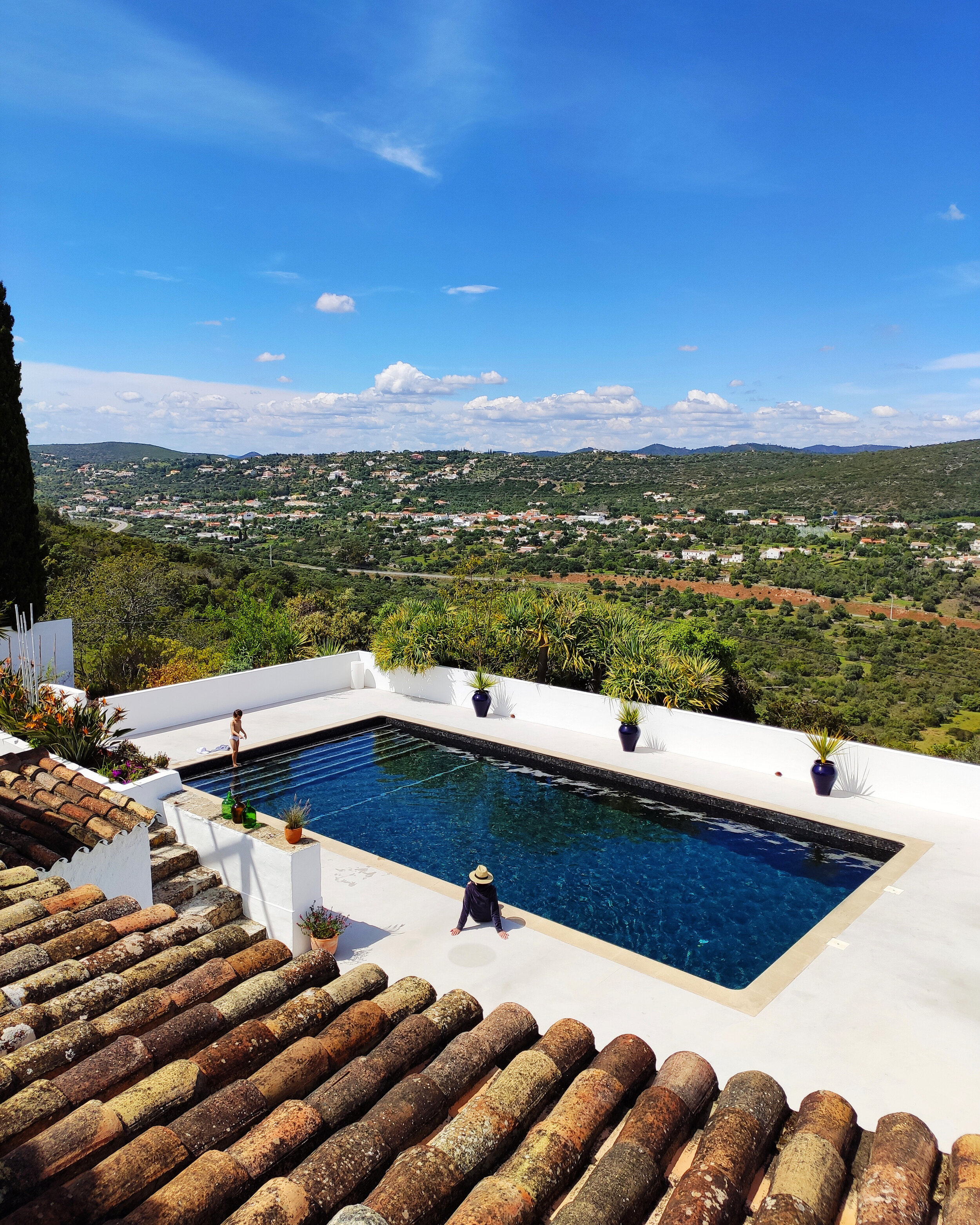
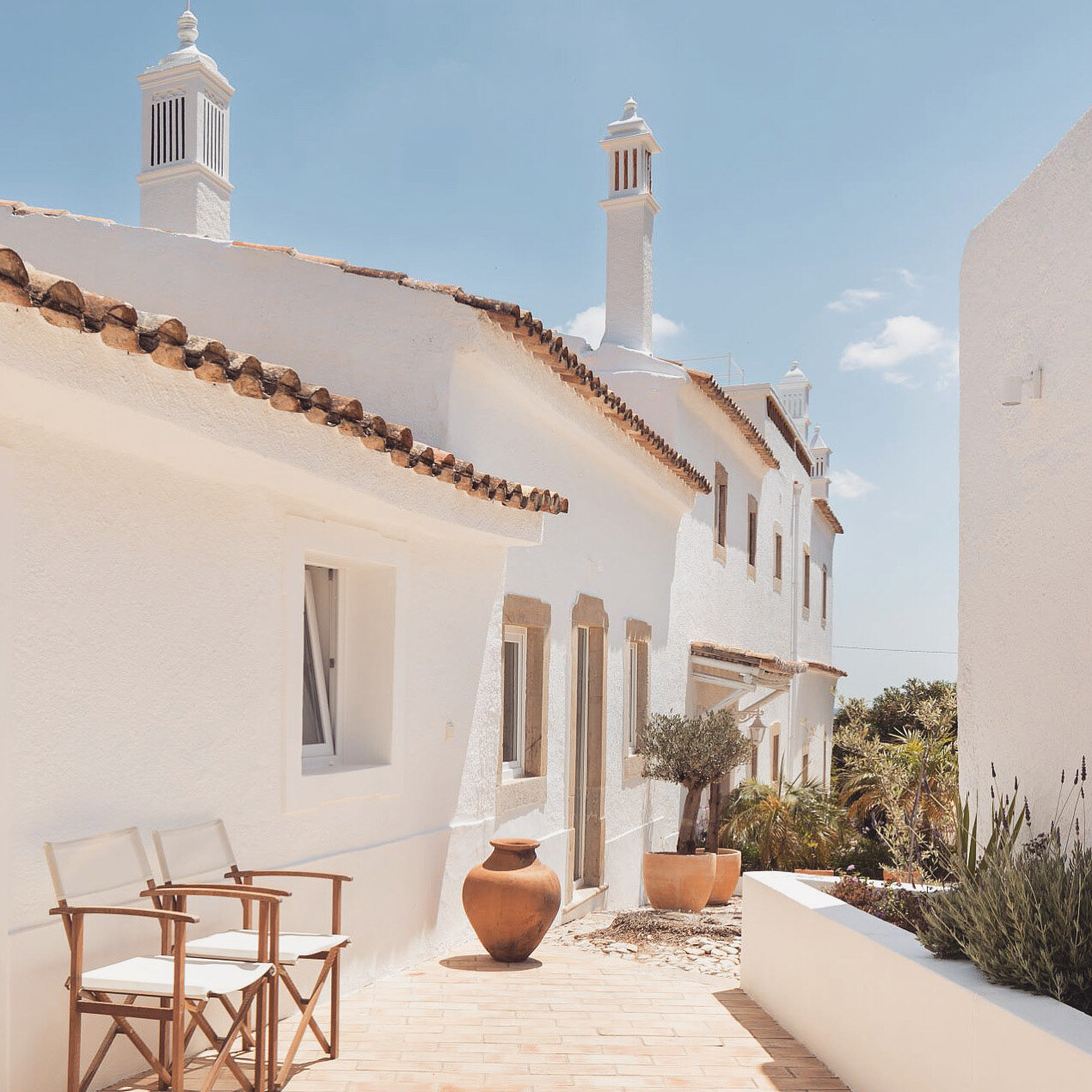

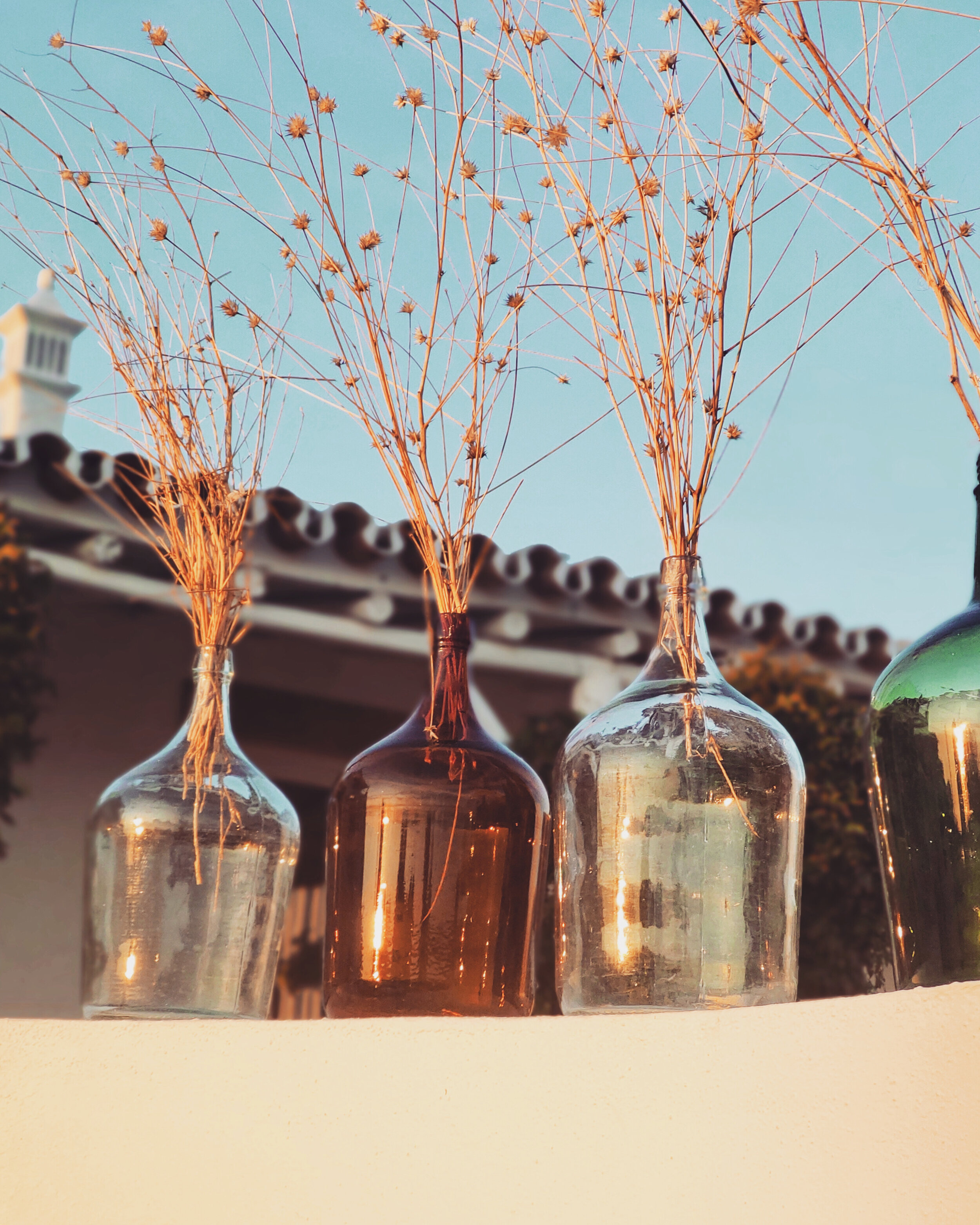
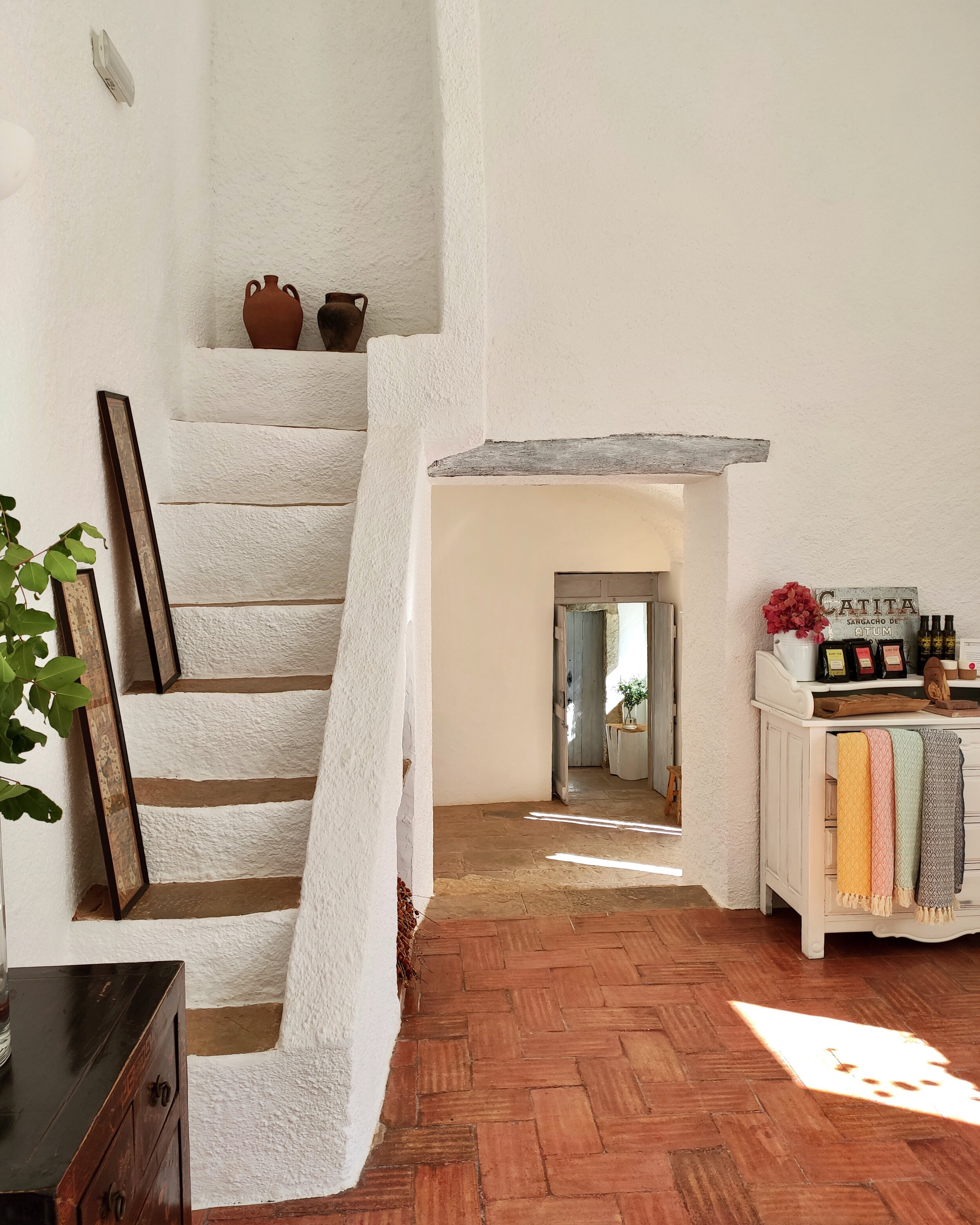
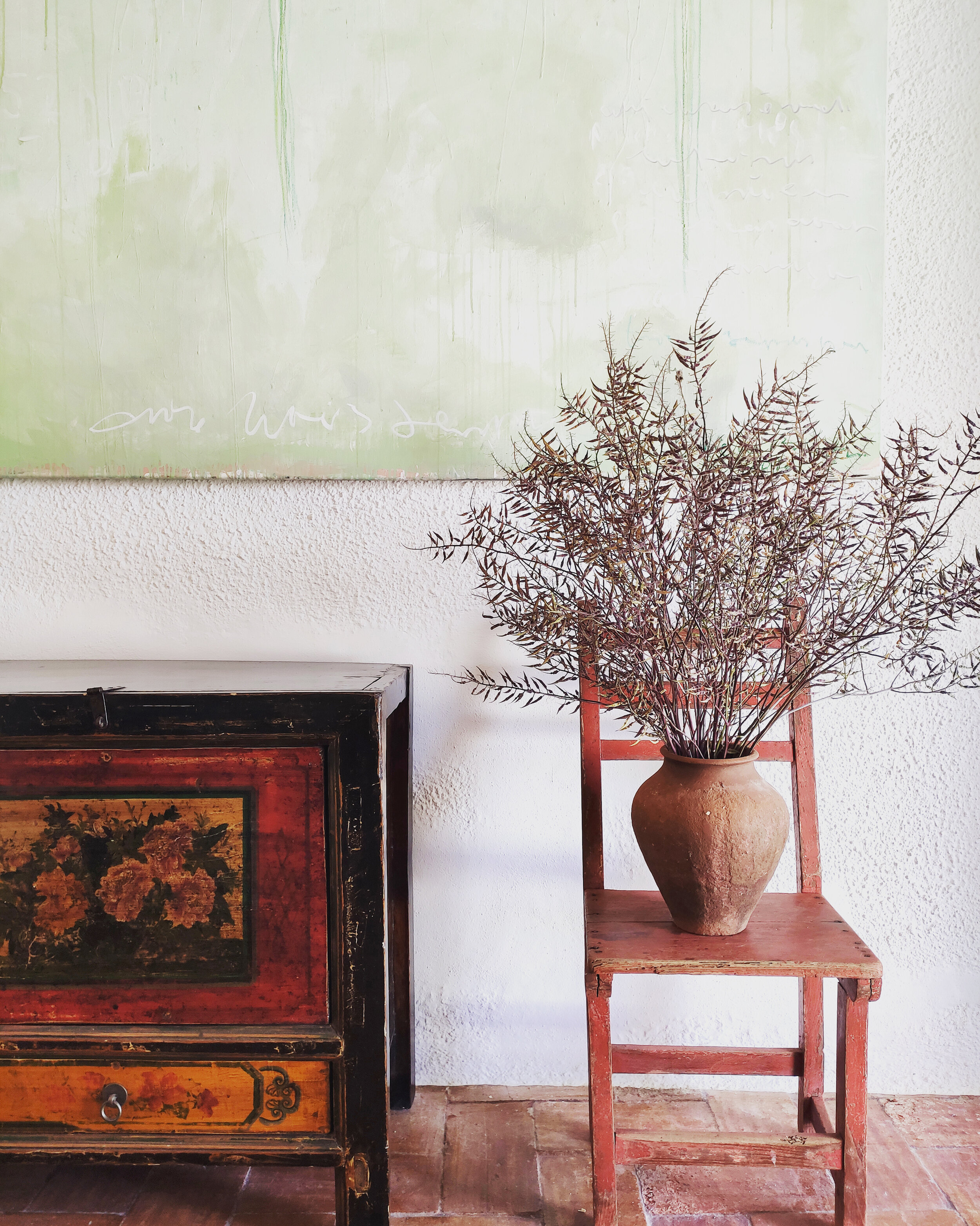

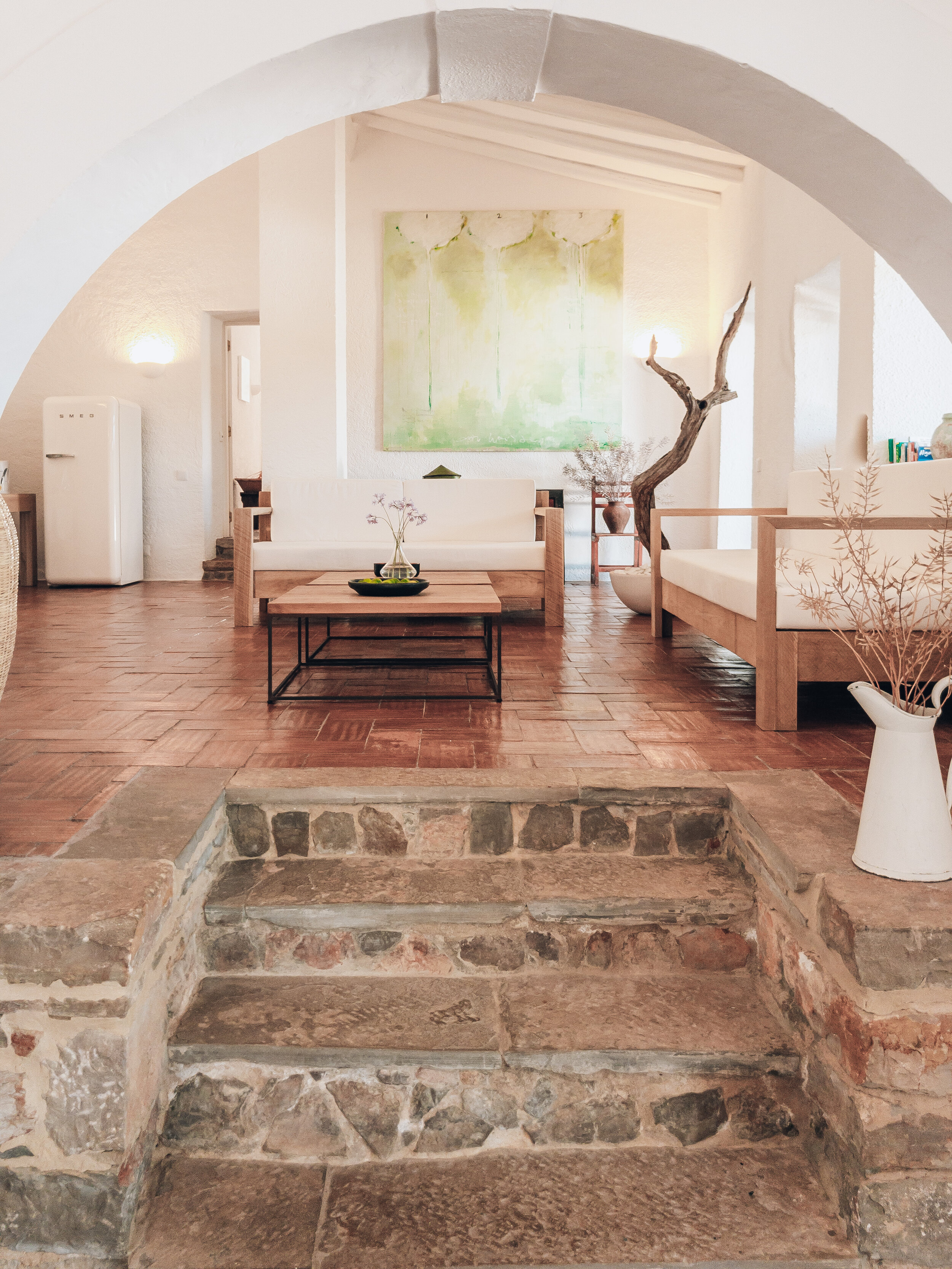

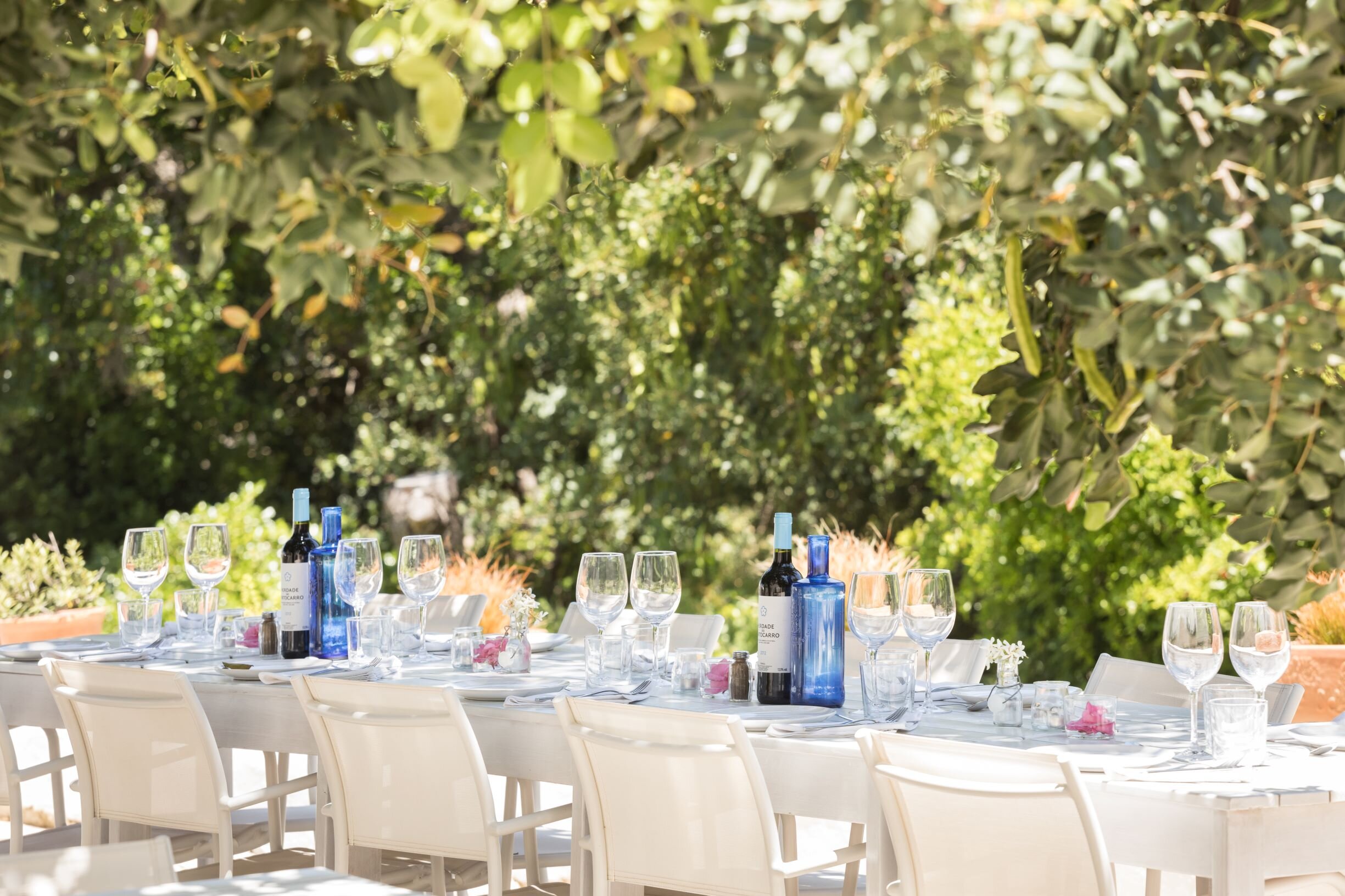
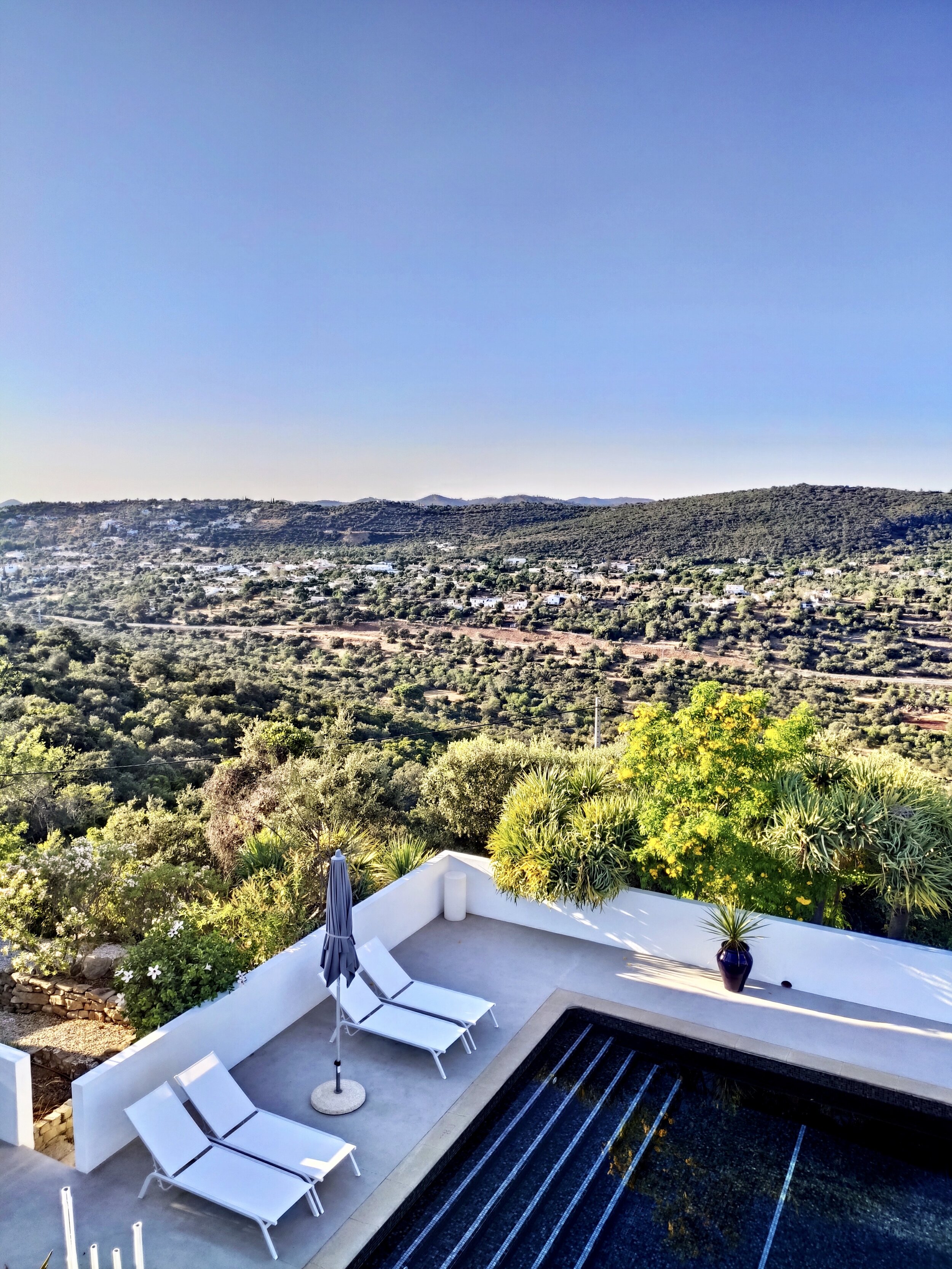
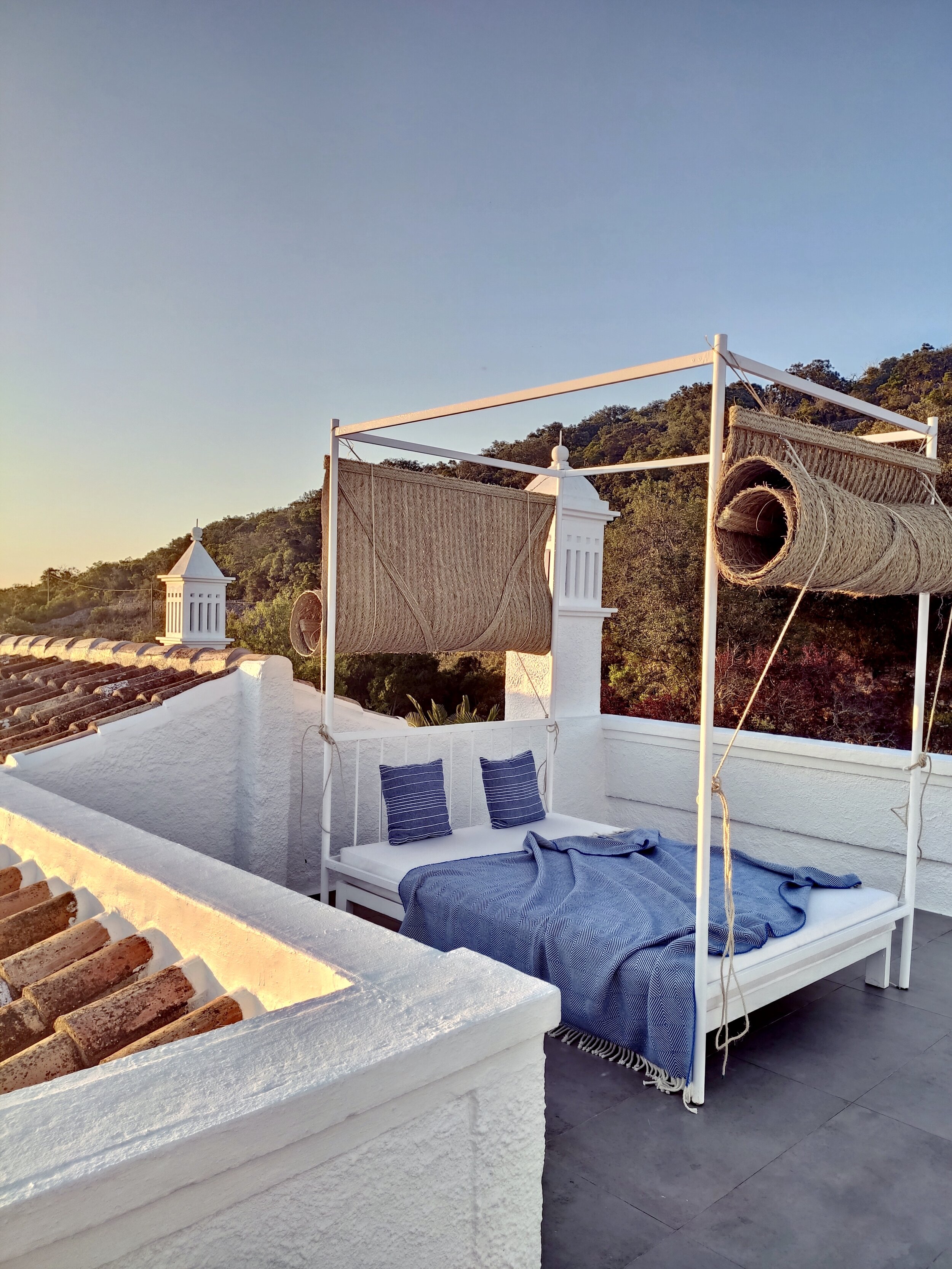

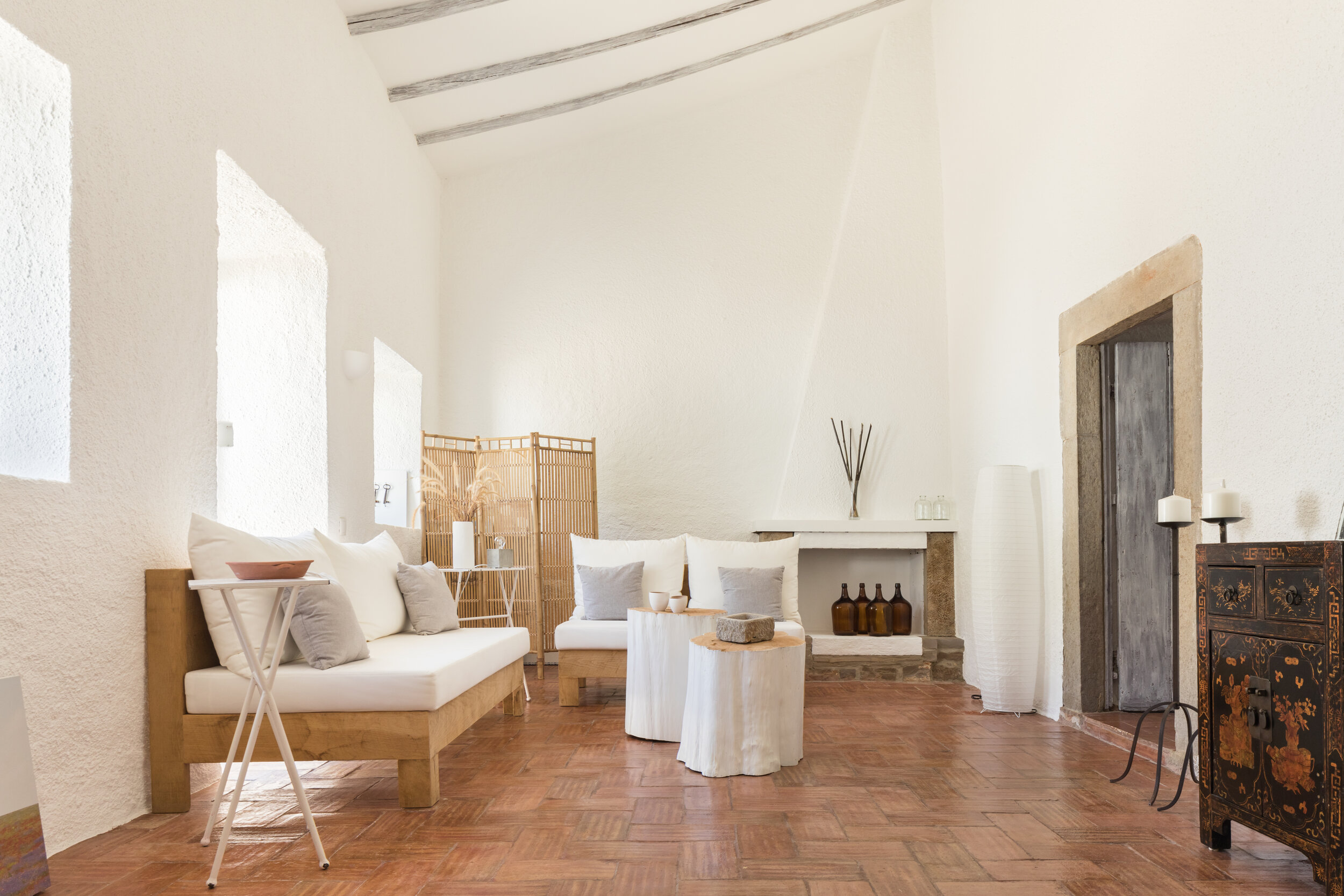
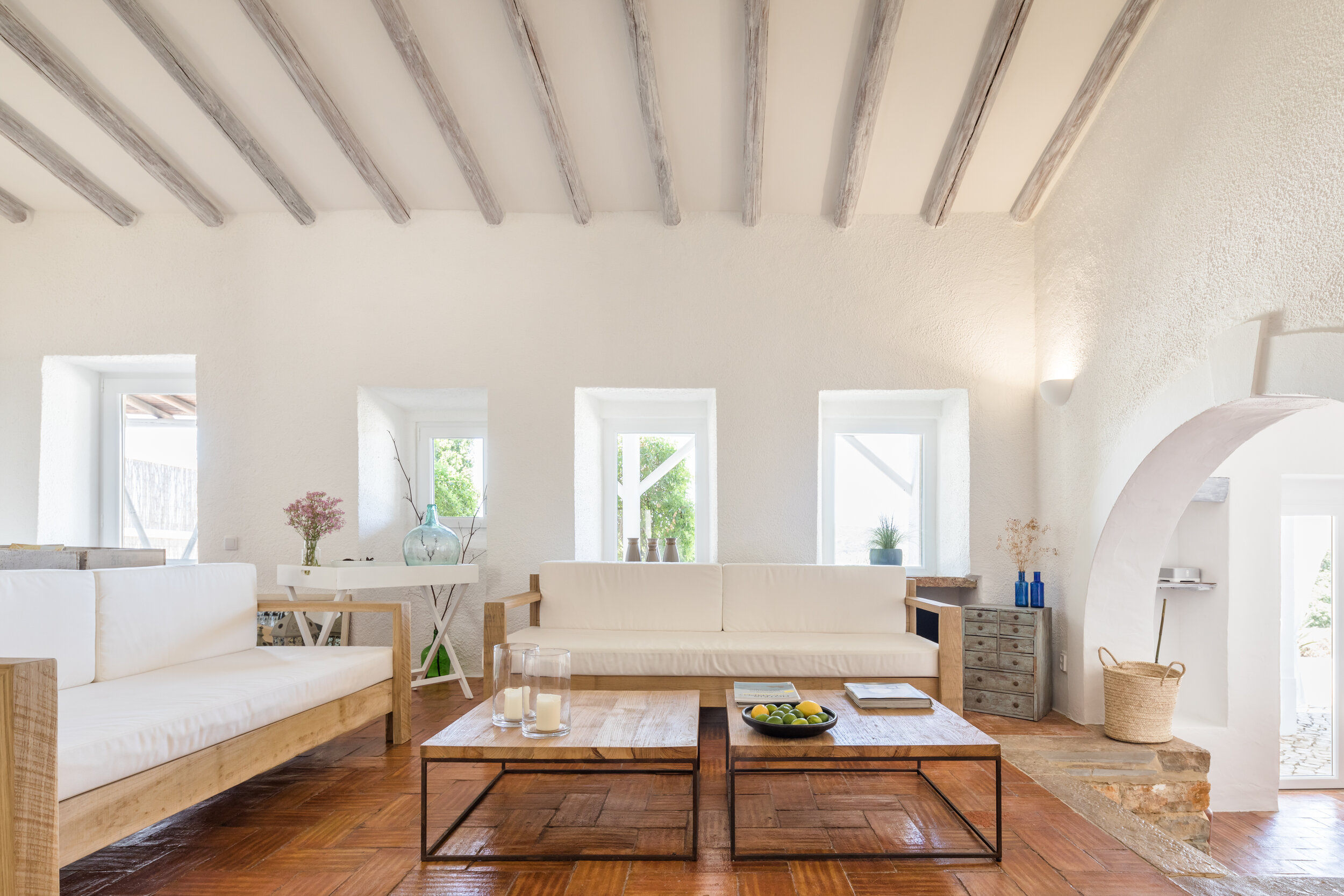
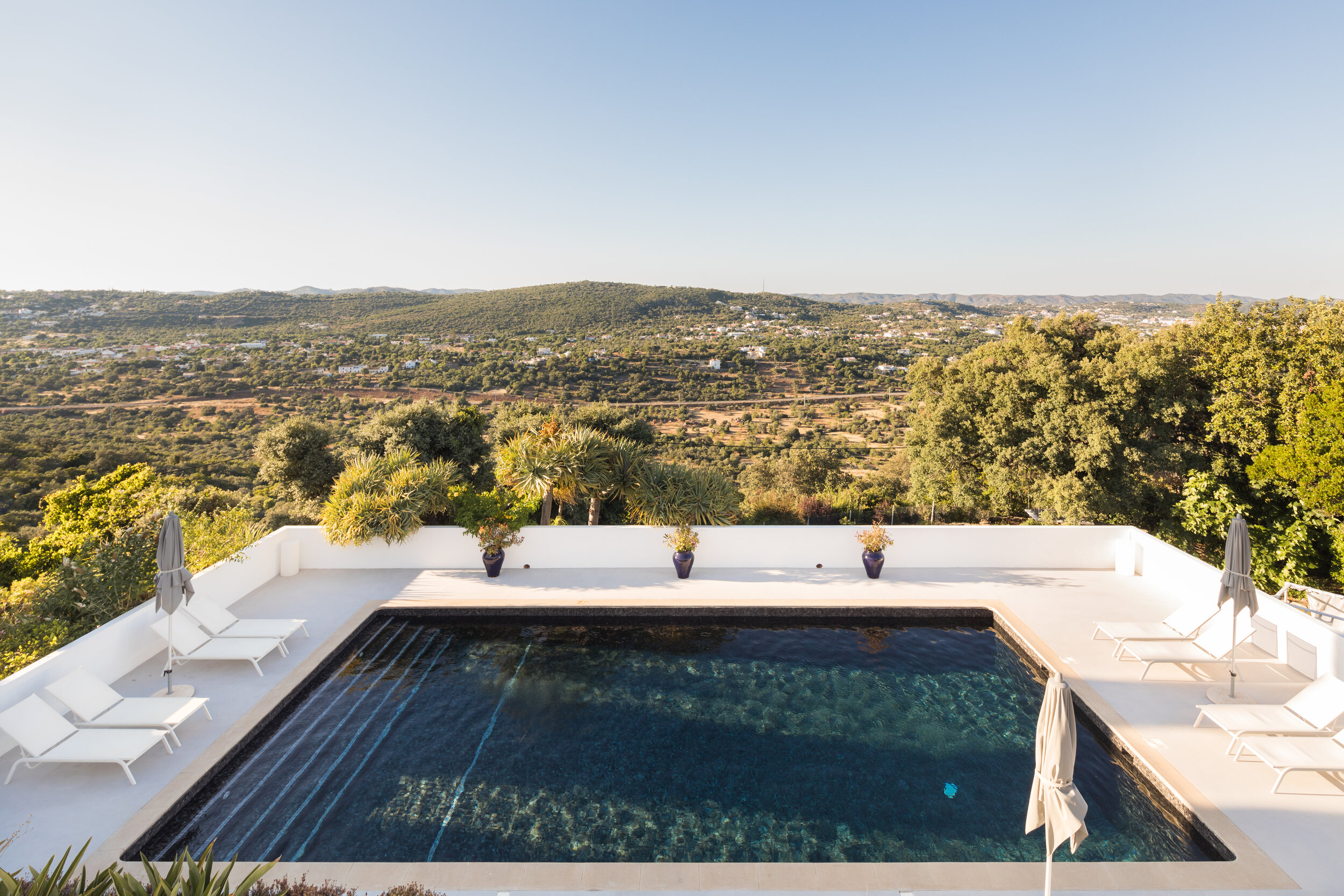


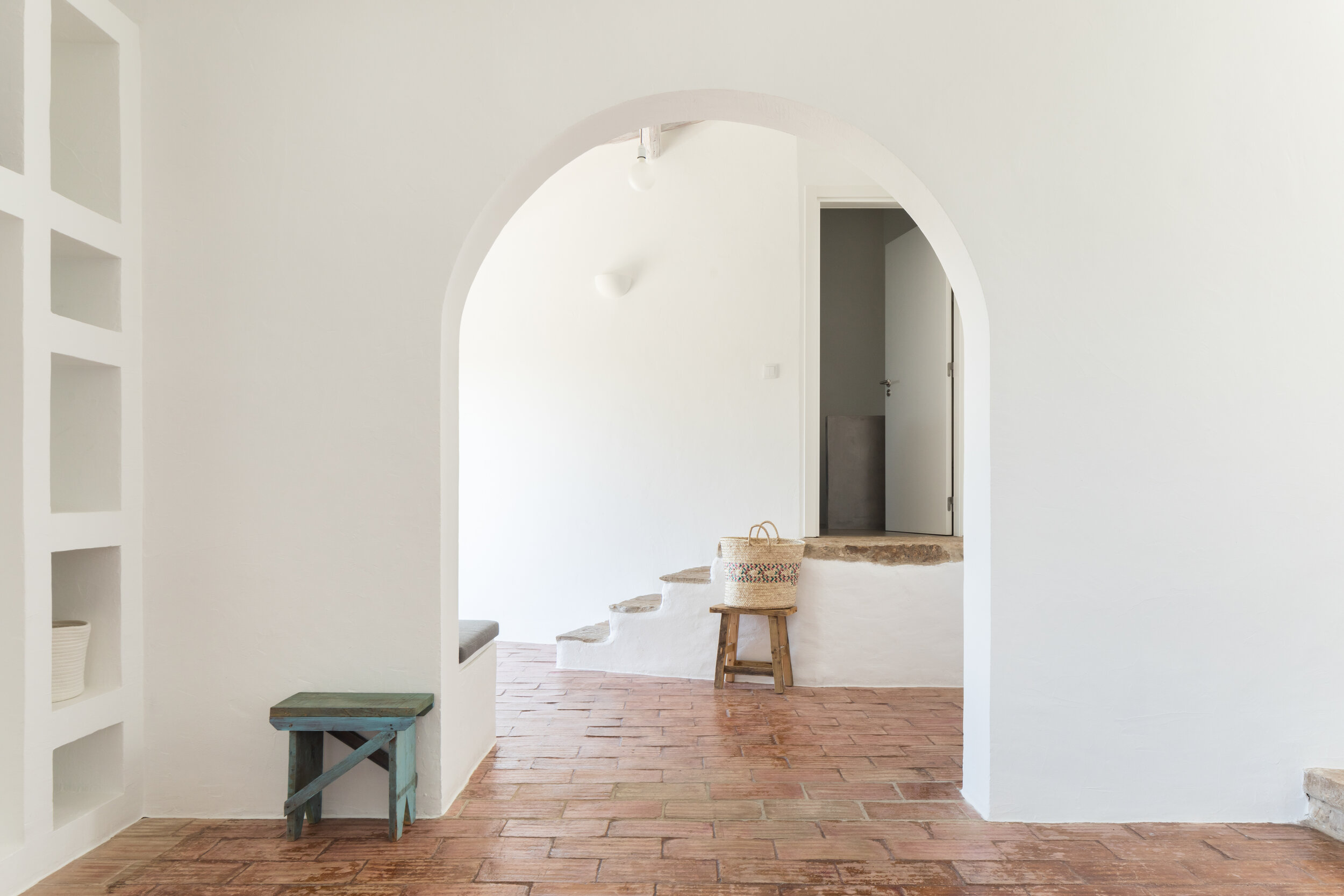
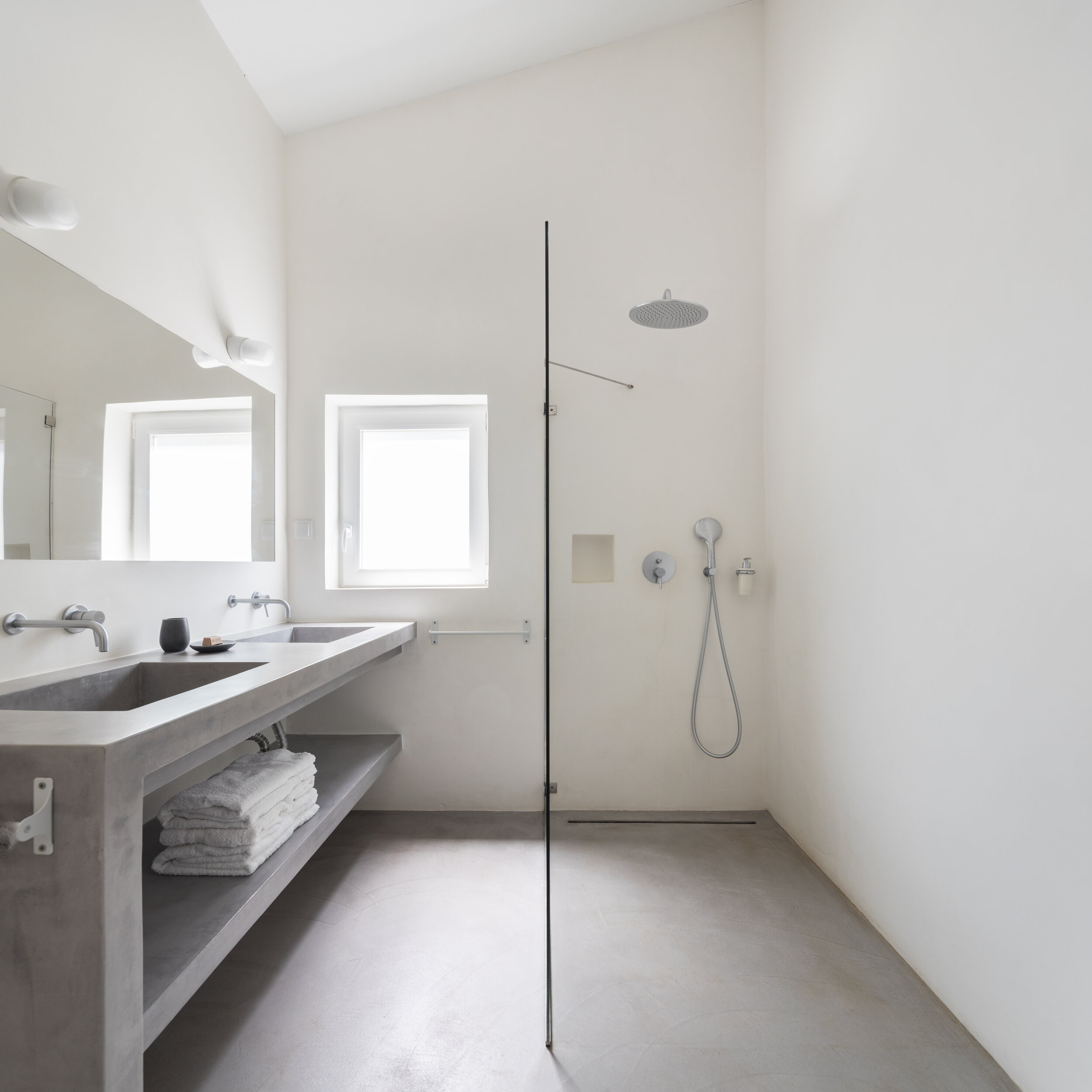
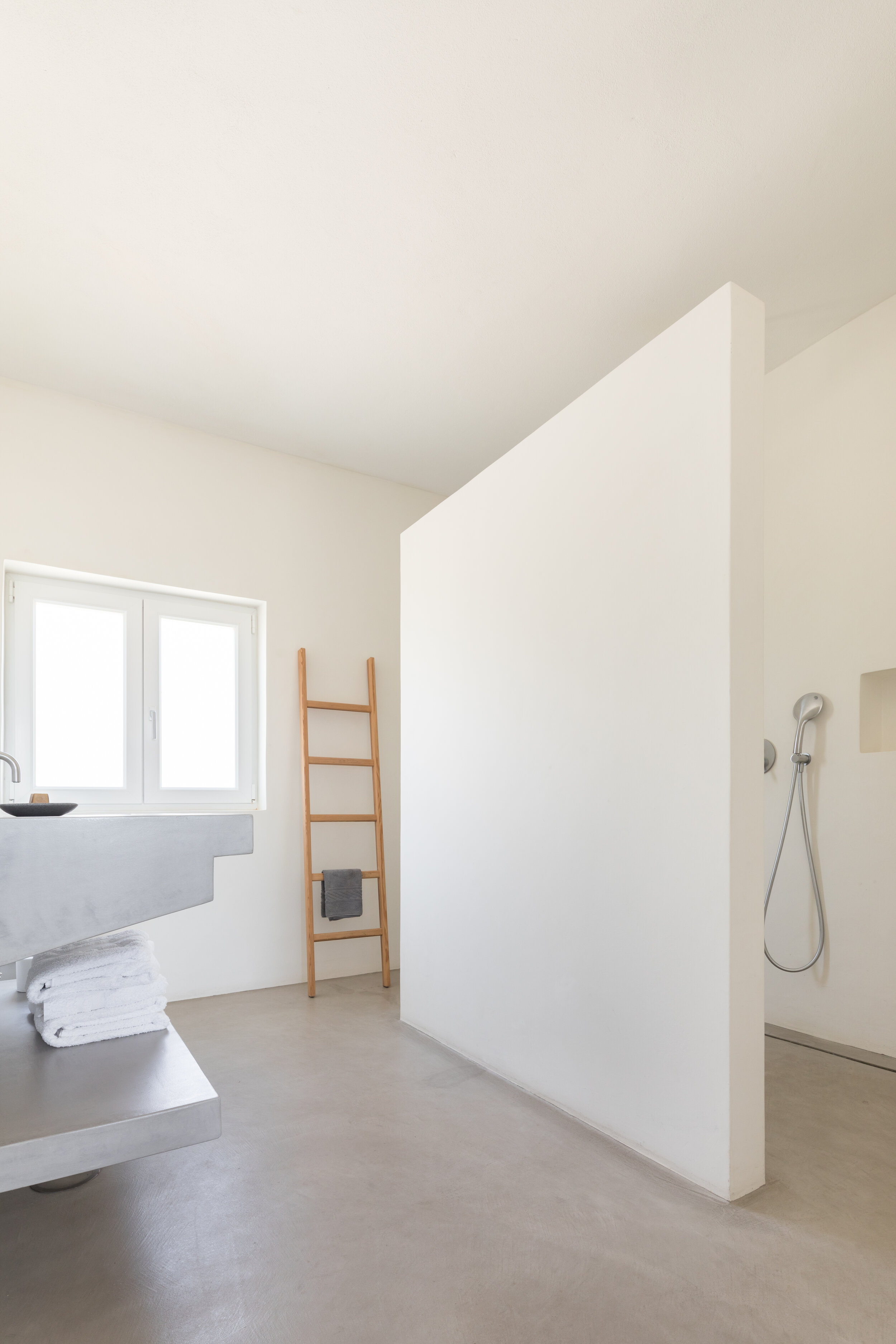
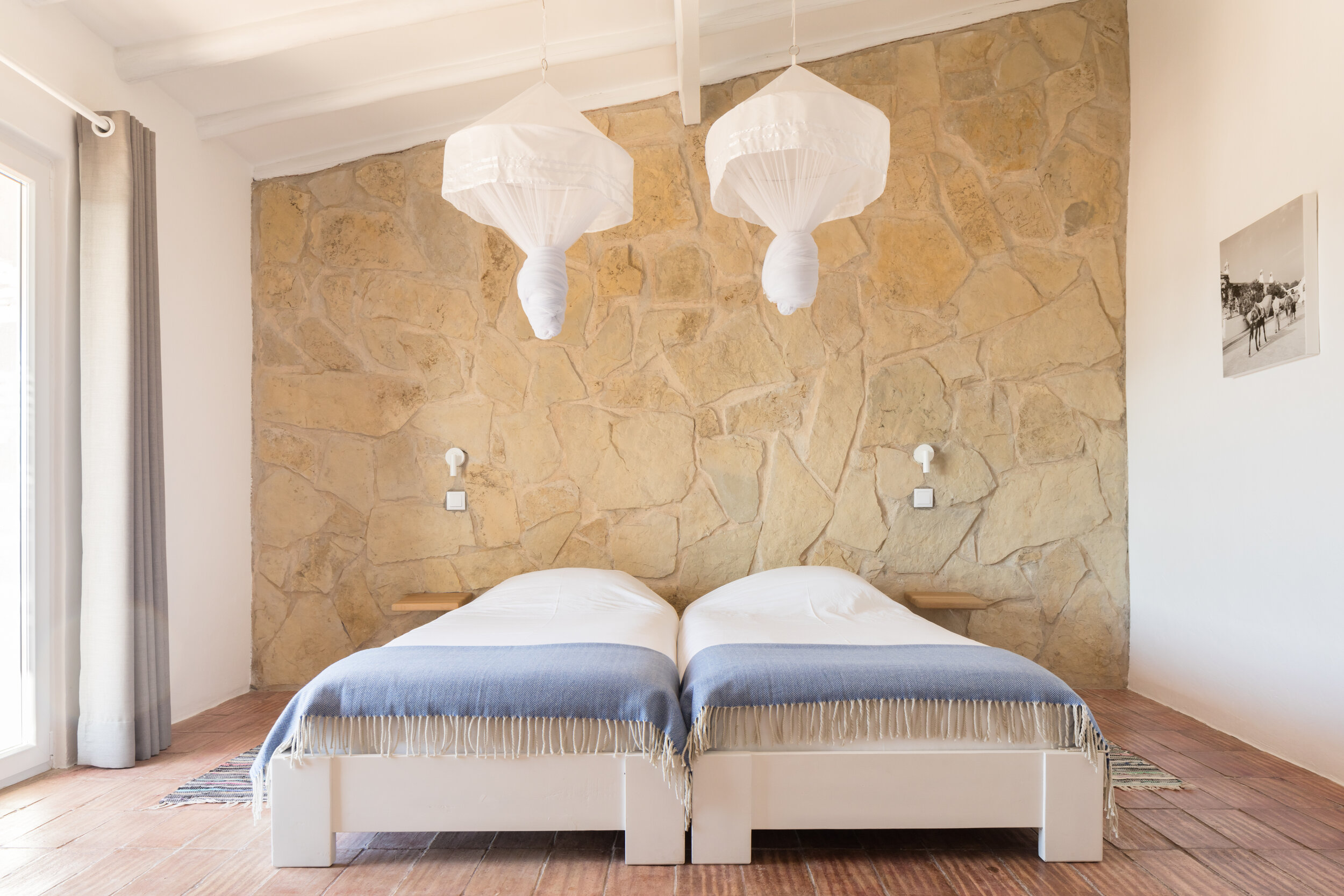
Where are you both from? Why have you moved to rural Algarve? When and how did you stumble onto the Farmhouse and, how did you know that this grand old estate was an idyllic setting to curate into one of Portugal’s most highly-rated hosted stays?
We are from Antwerp, Belgium and moved to the Algarve in 2014. We both worked in a bank, working long hours and living a normal life. We'd been playing with the idea of opening a B&B in a warm place but always postponed that decision. Drawn by its famous climate, but also by its spectacular nature and friendliest of people, we started looking for a house in Algarve as early as 2010. The birth of our son in 2012 was a catalyst in the sense that it made us wonder what place we wanted him to grow up in.
After looking for 3 years and numerous house-visits, we finally stumbled on the Farmhouse. It was a (rare), rainy day in February and of course, the Farmhouse did not look as it looks today, but we immediately knew this was the place. What convinced us were mostly immaterial things. The qualities you cannot build, like history, space and the wide-open views. In the period between 2014 and 2020, the Farmhouse was lovingly restored to what it is today… a sanctuary. A beautiful but unpretentious place. A place of kindness and serenity.
What do you think inspires travellers to visit the Algarve region the most?
Most travellers are initially drawn by the perfect climate and the wonderful beaches, but it doesn’t take long to also discover that in the Algarve hinterland, there are beautiful old villages, walk and bike trails, markets
and fairs that celebrate local produce and artisanal wares.
The gentle beauty of muted colours that surround the Farmhouse create a dreamy setting to unwind into a more traditional way of local life. As a guest to the region for the first time, what would be the best way to immerse into the local way, during a stay at the Farmhouse?
Rent a bicycle and discover the hillside villages where time stands still. Visit local markets, pottery and palm-weaving shops. Watch how olive oil is pressed or cork stoppers are made from cork bark found in this region.
What do you love most about living and hosting at Farmhouse of the Palms?
We never expected hosting people to be so rewarding. We have come to understand the circular energy that comes with genuine hospitality and kindness. On arrival, guests quickly surrender into the local rhythm, landscape and comfort at the Farmhouse. Their appreciation and gratitude inspires us to create a unique, friendly and memorable stay. We believe hospitality is less about the material things and more about what we can do to help create an authentic and enjoyable stay experience.
If only we could click our fingers to be 'poolside', soaking up that dreamy vista, sown with generation-old knowledge of farming traditions. This is a region where the land is still worked in the same way that it has been for centuries. What is the regions signature crop? is there a local secret to sustainable living that we should know about?
The Barrocal region where we are located is fertile but hilly land, mostly used for fruit orchards, the occasional vegetable and avocado gardens, and goat herds. The Algarve climate and soil is ideal. There are not many fruits that would not grow here. This region is a healthy source for oranges, figs, almonds, olives, plums and carob. More inland, the cork tree is prevalent with cork harvesting season happening between June and September each year. Locals also love to make their own honey, which has a distinct orange, rosemary or thyme flavour.
Apparently the Algarve grows the oldest olive tree in the world. Please tell us a little about the tradition of the olive oil industry.
Olive trees grow well in a Mediterranean climate and olive oil is used in every household for cooking. Most people living outside city centres have several olive trees which are harvested every year in October. The olives are taken to local olive presses. (Some on a cooperative basis, others not.) People can choose to receive the olive oil or sell their olives for money. Every village has an olive press. We love the non-commercial and local nature of these olive oil producers. Only the olives from local farmers are pressed and when all the olive oil is sold, everybody waits for the next harvest.
A favourite travel pastime would have to be wandering aimlessly through village streets to stumble onto a local market to try local specialties. Is there a local market nearby? What would you recommend for guests to try?
There are fish and vegetable markets in most Algarve towns every day. We love the sight of fresh, local produce… the fragrant colours and smells. The best market is on Saturday in Loulé, when local farmers descend into town to sell their products. They may be the ugliest carrots or tomatoes but my goodness… they are delicious!
If we were to host a dinner party like a local, what would be on the menu?
We would definitely start with Ameijoas Bulhão Pato, a long name for clams steamed in garlic and coriander. The Ria Formosa natural park of the Algarve, is most famous as a breeding ground for birds, but it is also an important cultivation ground for clams and oysters. We order our clams from local fisherman who collect the clams in the morning for us to serve fresh in the evenings.
Next we would continue with Cataplana, the most typical of Algarve dishes. Cataplana is both the name of the dish and the name of the pot in which the dish is cooked, which consists of 2 half bowls closed together. This main dish is usually prepared with fish, seafood and vegetables, but many other variations exist. The ingredients are cooked by slowly steaming together in the cataplana over a low heat. This method of cooking gives the food a unique and characteristic flavour, which is finger-licking good, believe us.
To accompany the meal we would enjoy with a white wine from a local winery, made with Arinto grapes. To share with friends, we would enjoy a glass of Medronho, which is a local liquor made from the fruits of the Strawberry Tree (Arbutus Unedo).
What are some local crafts known to the Algarve region?
Algarve is probably most renowned for its pottery and basket weaving. It's good to see these traditional crafts being grouped with local associations, with the aim to teach young people so that traditional craftsmanship continues to be preserved in this region.
Portugal may be small in comparison to her spirited Spanish neighbour but there is a vibrant cultural mix of traditions and cuisine that are uniquely Portuguese. What are Portuguese people most proud to share with visitors?
We have come to appreciate Portuguese people as being modest and introverted in comparison to their Spanish neighbours. But at the same time, the Portuguese are probably the friendliest and most helpful Europeans we have ever encountered. Aside from Portuguese, most locals speak English and French when needed. They are proud of the rich history, culture and especially the beautiful diversity on offer in Portugal, and very happy to share these experiences with visitors.
The Portuguese have a thing for ratings and generally Portugal scores well with international rankings, whether ‘best wine’, ’best holiday destination’, ‘best beaches’, ‘best place to live’ etc., often making headlines in local papers. They are very proud of their country.

